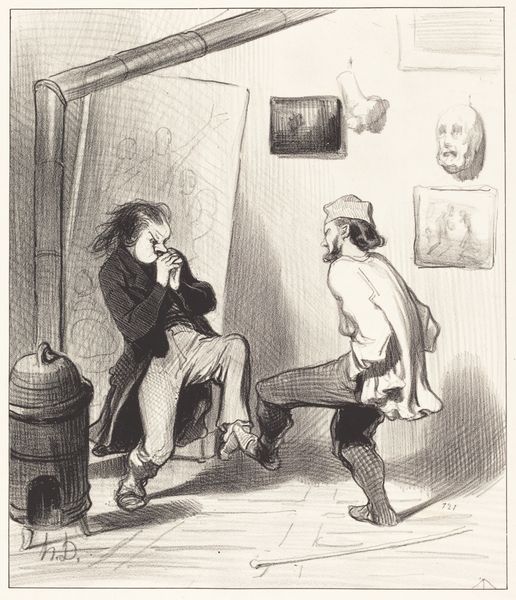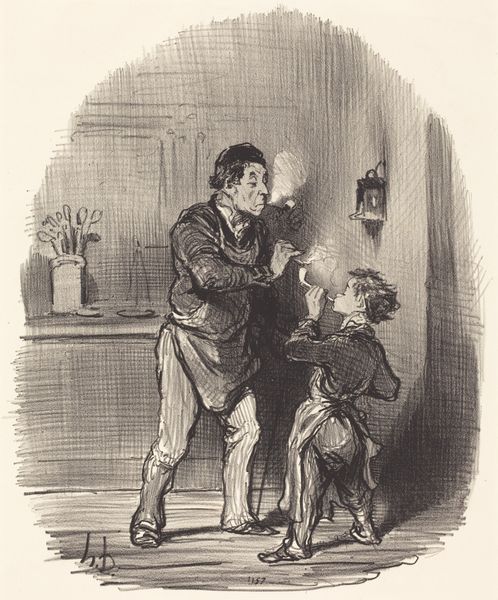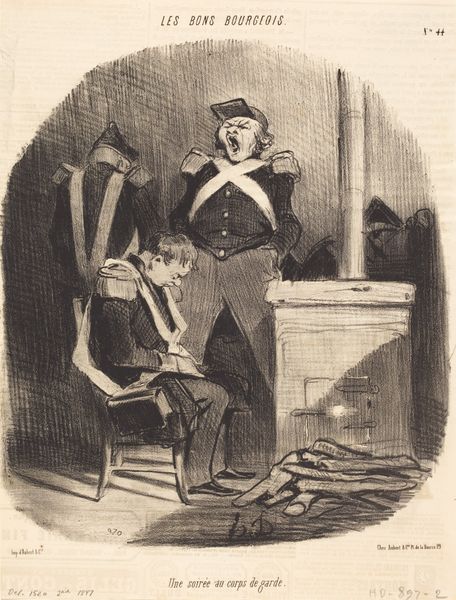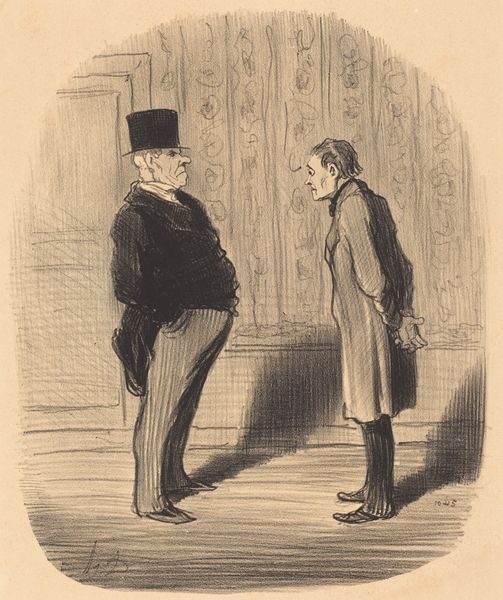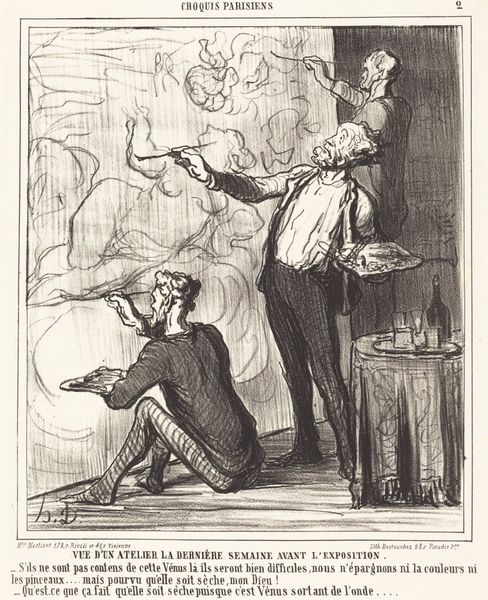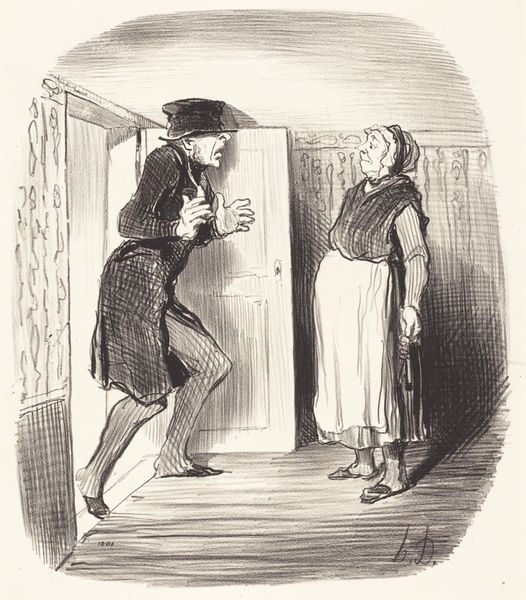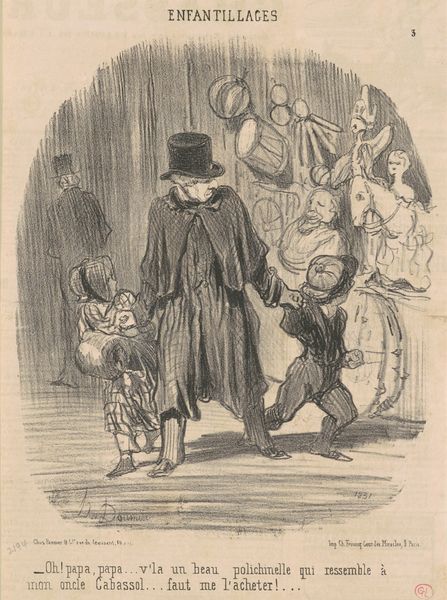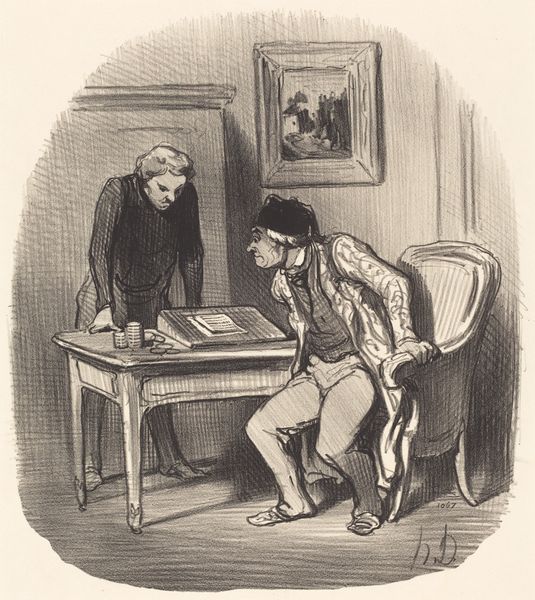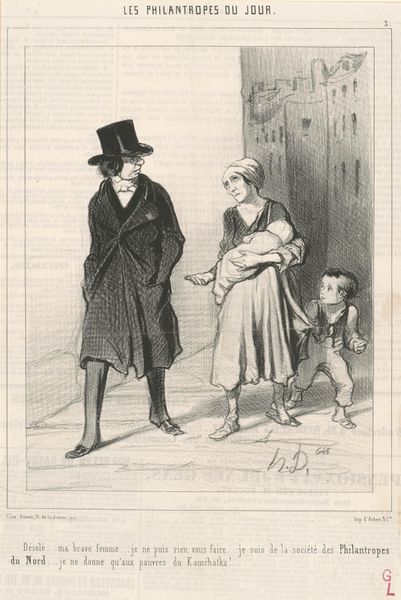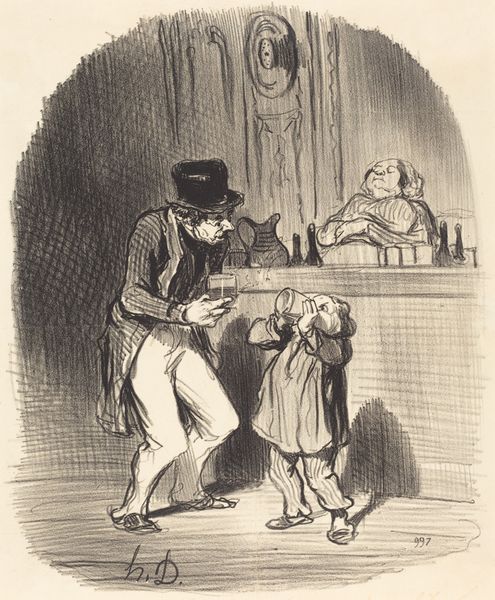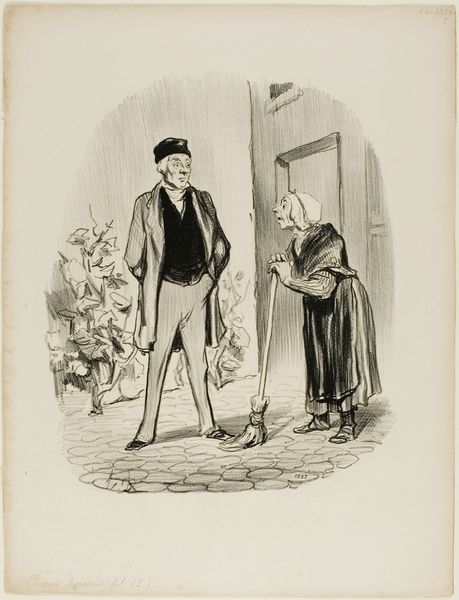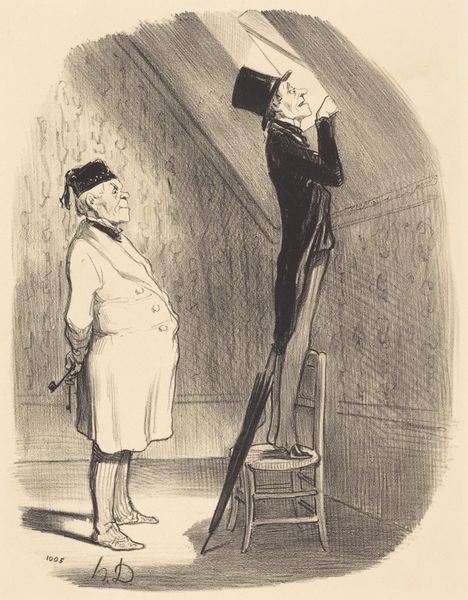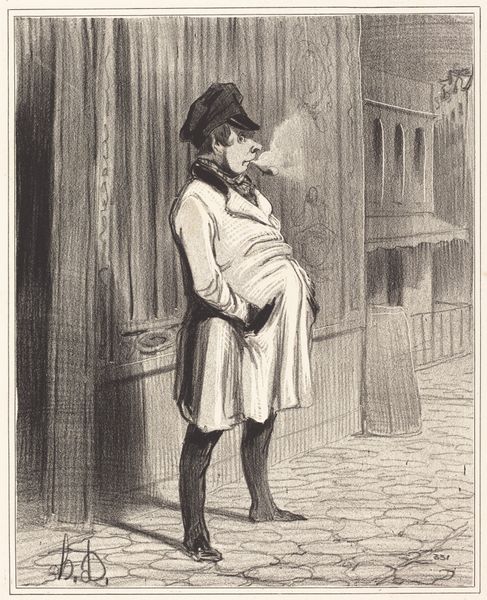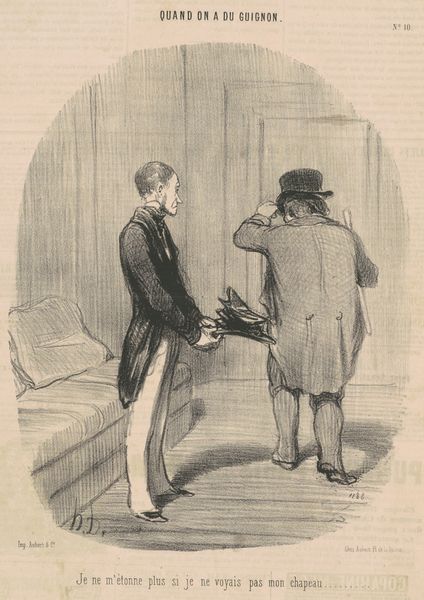
lithograph, print
#
lithograph
# print
#
caricature
#
genre-painting
#
realism
Copyright: National Gallery of Art: CC0 1.0
Editor: So, this is Honoré Daumier's lithograph, "Les Suites d'une insurrection," from 1849. It shows a rather dismal scene. A child in a dunce cap kneels before an authority figure. The kids behind them look bored. It definitely strikes a tone of disillusionment. How do you interpret this work in light of its historical context? Curator: Disillusionment is spot on. Daumier created this during a period of intense political upheaval in France. This lithograph speaks volumes about the failed promises of the 1848 Revolution. It suggests a critique of power and authority through what appears at first glance as a simple classroom scene. Think about who that figure with arms crossed is meant to represent. Editor: Someone in charge? Perhaps a representation of the ruling class? Curator: Precisely! The ‘insurrection’ has consequences, visible here as public shaming. Daumier often used caricature to expose the hypocrisy and brutality of the powerful. How does knowing it is a lithograph, a print, and therefore widely reproducible, change our understanding? Editor: Well, prints are often about social critique and activism because they're accessible and get the message out. The act of mass distribution becomes a statement itself! Daumier is spreading dissent. Curator: Exactly. This artwork wasn't just seen; it was disseminated widely, becoming a crucial visual commentary during that period. It speaks directly to the power of imagery to shape public opinion. I find it's power endures as we confront inequality today. Editor: I had no idea it was so pointedly political. Curator: It’s easy to read it as just a harsh teacher and student. The social context transforms it. Editor: Right. This work is about institutional critique, mass communication, and the way art engages with political power. Curator: Absolutely. Art becomes a record and agent of social change. It can bring new perspective when facing inequality or public dissent.
Comments
No comments
Be the first to comment and join the conversation on the ultimate creative platform.
